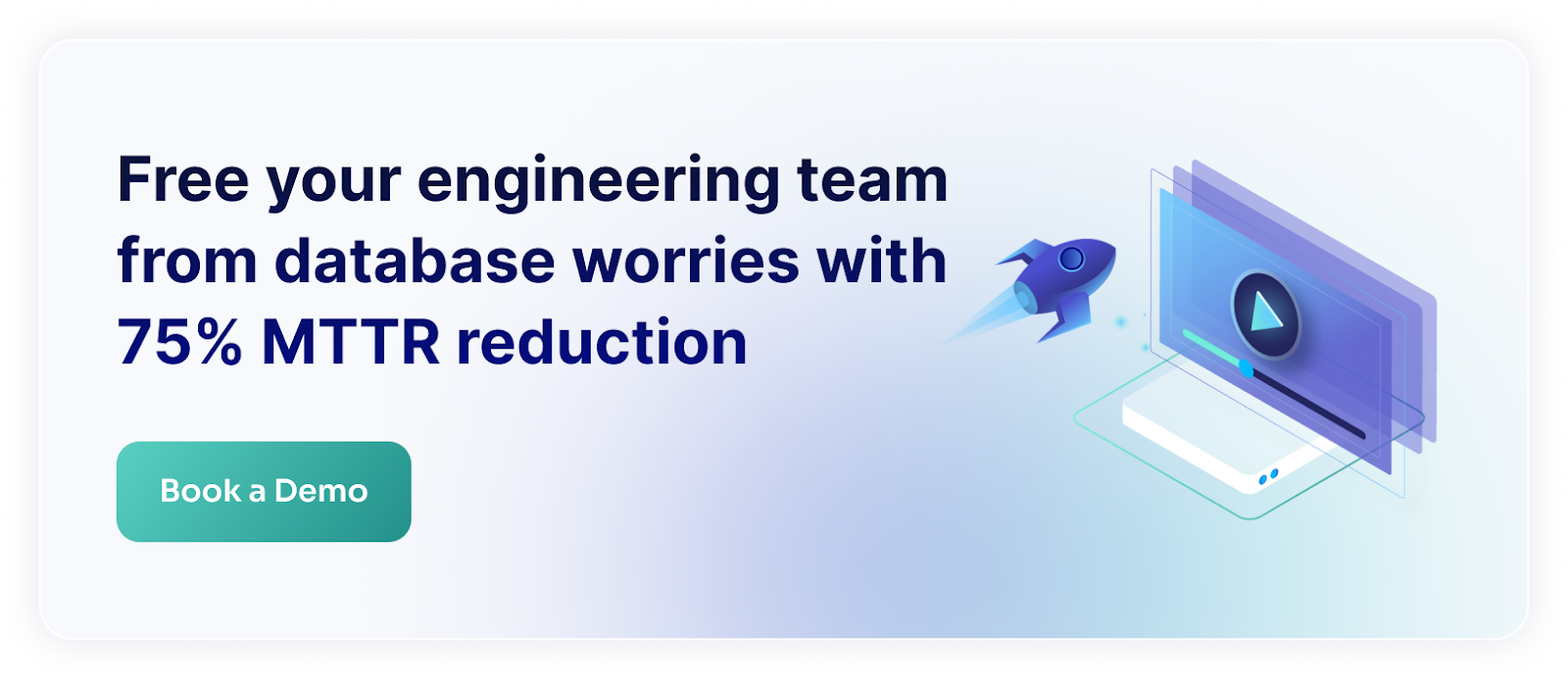Platform engineers thrive on automation. Our goal is to have everything scripted and operating seamlessly, without the need for manual intervention. Unfortunately, databases can be slow, unreliable, or prone to failure after deployments, impacting both business operations and customer experience. It's no wonder we're eager to resolve these issues quickly.
But what if we could avoid these problems entirely? Imagine if our databases could self-heal and resolve issues automatically - or even better, prevent them from occurring in the first place. Read on to discover how Metis can help ensure your databases never fail and handle issues automatically.
Observability 2.0 As a Solution
Database monitoring alone isn't sufficient for troubleshooting issues. Overloading developers with data points and indecipherable charts doesn't help them get any closer to finding solutions. The problem with raw data is that it shows us symptoms, not the causes. We might see that CPU usage has spiked or memory is running low, but it doesn't tell us what triggered the issue or how to resolve it. Platform Engineers need to protect their developers from these issues.
What we need is observability 2.0. We must turn metrics into actionable insights and meaningful correlations. It’s not enough to simply see a spike in CPU usage; we need to understand what was deployed recently, what changes were made, which queries were affected, how the database configuration was altered, and more. All these pieces need to be presented together to make troubleshooting clear and straightforward.
Recommended reading: Observability vs Monitoring - Key Differences & How They Pair
Metis provides exactly what you need. By integrating seamlessly with your CI/CD pipelines, Metis analyzes performance and offers insights. It evaluates schema migrations, configuration changes, extensions, and deployments, allowing you to view everything in context.

Metis highlights what truly matters across your entire ecosystem, giving you a comprehensive view of your system's health.
Get Answers Instead of Data
Capturing data points and facts is only the beginning. The real challenge is transforming those data points into a coherent narrative that explains the root cause of the issues. Is the spike in CPU usage due to an inefficient extension? Perhaps it’s a result of recent code changes, or maybe it's due to a shift in data distribution flowing into the application. There could be numerous factors contributing to system overload.
To uncover the causes, we need a deep understanding of how databases operate. We need systems capable of analyzing database internals and drawing insightful conclusions. This means understanding query execution plans, statistics, index structures, data organization, and routine database operations. This should be automatically analyzed and presented to developers in a clear, actionable format.

Metis addresses all of these areas comprehensively. With its advanced reasoning module, Metis builds a detailed picture of the entire database ecosystem and everything that interacts with it. This includes:
- Analyzing developer changes within their environments, CI/CD pipelines, and during deployments
- Capturing configurations, extensions, schemas, statistics, and schedules of routine database tasks
- Detecting anomalies in infrastructure, OS, and database metrics
- Identifying changes in query execution and tracing their origins

By connecting these dots, Metis can provide clear explanations and solutions for issues. For example, it can identify that a CPU spike was caused by a recent code change that led to a query no longer using an index. The recommended solution might be to drop the outdated index and create a new one. This way, Metis offers developers actionable solutions they can implement immediately.
Recommended reading: 3 Things Database Reliability Is Not About And How Metis Brings Observability
Let Your Issues Fix Themselves
Once we have identified the solutions, there's no need for manual intervention anymore. Much like with CI/CD, the goal is to automate as much as possible to reduce the risk of errors and disruptions. Manual processes are often prone to mistakes, so it's best to eliminate them entirely. Plus, automation is essential for optimizing performance.
Metis provides developers with all of this. With its deep understanding of database activity and ecosystem changes, Metis can not only suggest improvements but also apply them automatically, or nearly so. It can recommend code optimizations, and configuration adjustments, submit pull requests with fixes, or even make the necessary tweaks on its own. Developers simply need to approve the changes, allowing issues to be resolved or even prevented without manual intervention. As a result, troubleshooting becomes automated, and databases can self-heal.
Use Metis And Have Your Databases Self-Heal
When moving quickly in production, many things can go wrong. Traditional monitoring tools aren’t enough because they overwhelm developers with raw data points. Metis goes beyond that by turning these data points into meaningful insights. It not only identifies the root cause of issues but also provides solutions—and can even automate the fixes. If something breaks, Metis can resolve the problem without needing developers to intervene, transforming databases into self-healing systems that can adapt and respond to unexpected changes.







